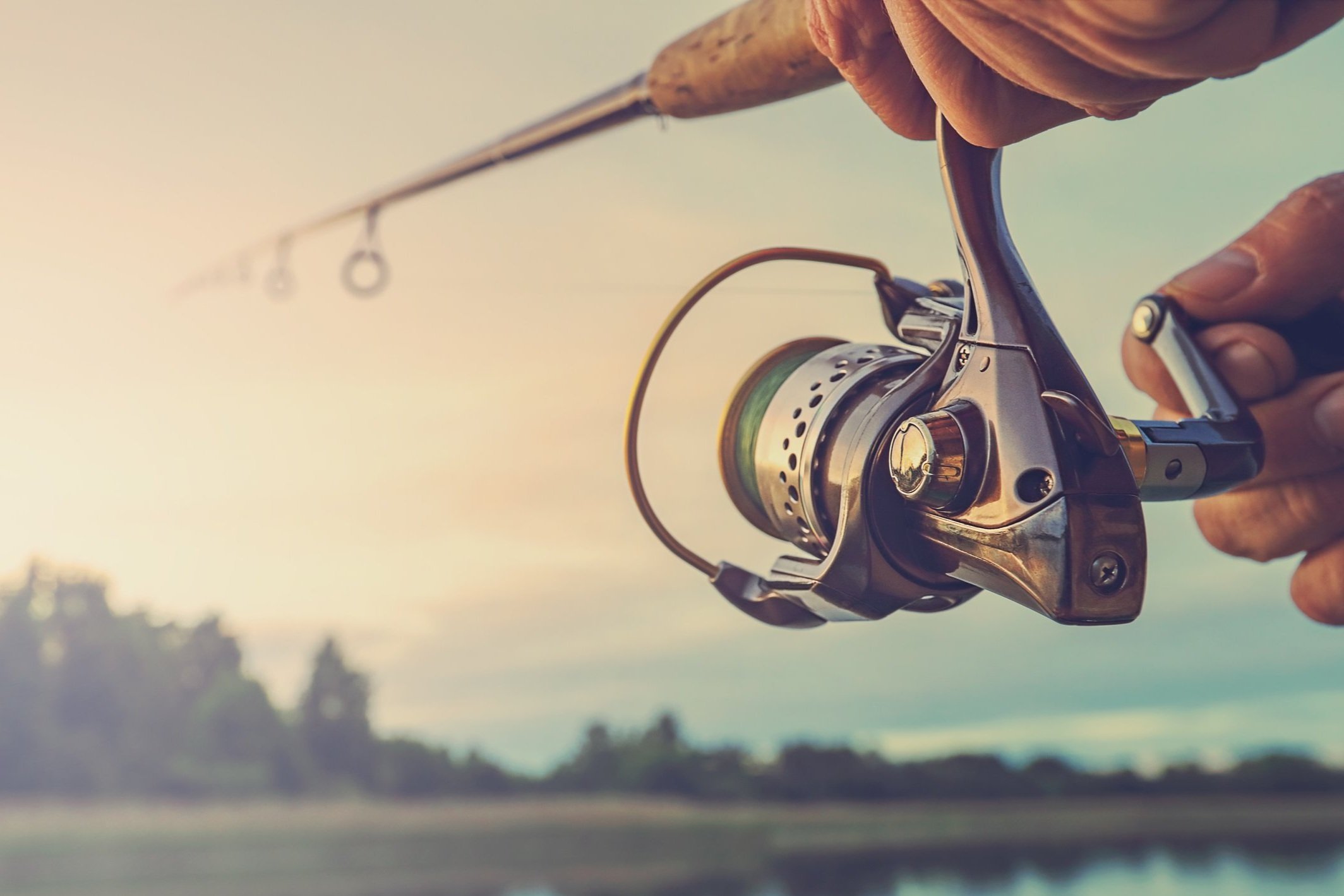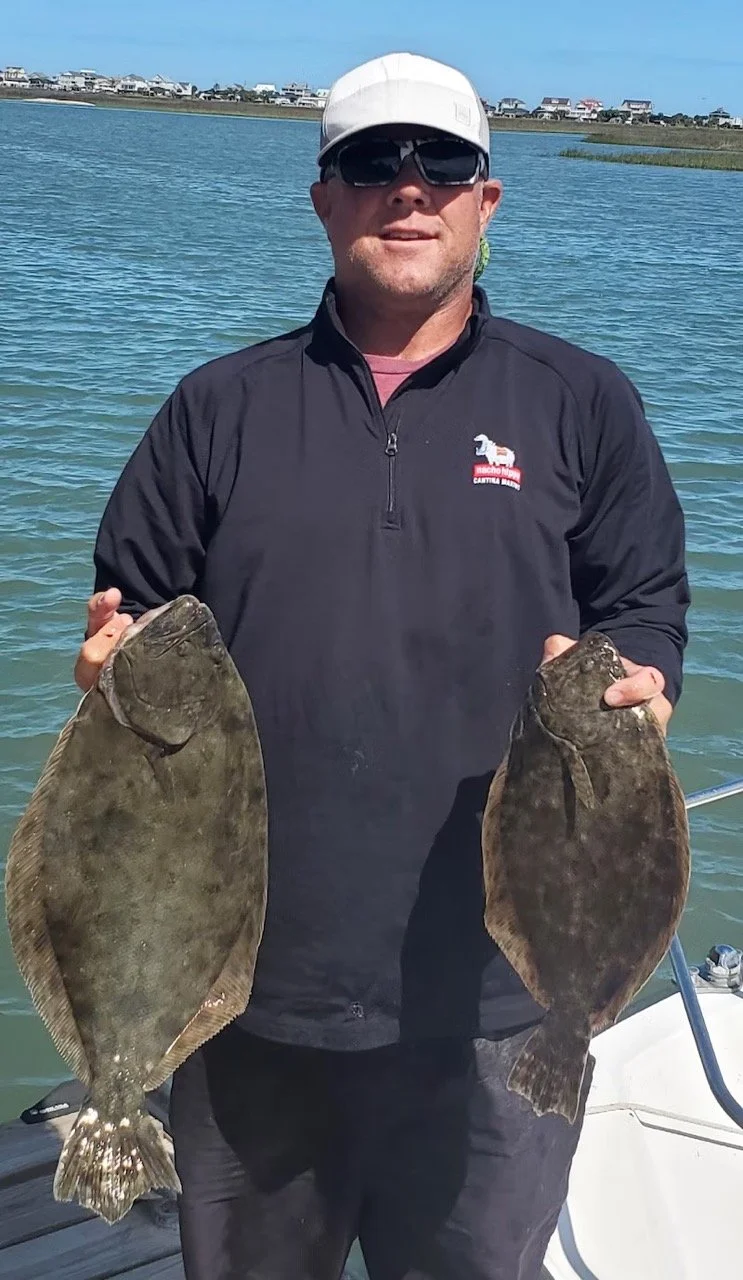
Flounder Fishing Charters
Flounder are probably the first fish most people think of with inshore saltwater fishing. Not only do they look unusual, they are some of the best eating fish the ocean offers.
Two closely related species, Southern and Summer Flounder can be found in South Carolina. They look very similar and have the same bag limit.
SOUTHERN AND SUMMER FLOUNDER
Trolling is a favorite method for catching Flounder, while casting is a close second. There are differences in the basic set-up for both of these methods, but learning how the fish bite and how to hook them is key for both.
Usually consisting of 1 to 4 rods set up with “Old Timer” rigs, 'trolling' occurs when you slowly move against the tide’s current with live bait. The weight at the bottom of the rig allows the hooks to stay clear of oysters, sticks, and trash on the bottom. It is important to find areas without much structure to ensure you don’t constantly get hung on the bottom. Mudminnows are a preferred bait to use since they are so durable, but finger mullet caught the same day work well, too. The idea is that once the bait is near a fish, the Flounder will grab onto the bait. You’re not in the Bassmaster so don’t throw your shoulder out trying to set the hook on these fish. Flounder won’t always grab the hook, sometimes they only grab the middle of the mudminnow, and if the angler is too excited the bait will be pulled right out of the fish’s mouth. Sometimes a Flounder will hold onto the minnow for a few minutes before deciding to eat the rest of it, or just let go. After losing a few fish by setting the hook too early, you will be able to notice when a fish is on the line or not. However, Flounder are sometimes in a very aggressive mood and hit the minnow like a Redfish. Practice getting a feel for how these fish feed and remember to be patient.
Fishing Methods
More Info
The type of sea floor you are fishing will have the most influence on the type of rig you choose for casting. If you are in an area with a lot of oysters, rocks, or structure to snag, fish a popping cork with enough leader to make sure your bait (live or artificial) floats just a few inches above the bottom. If you are along a sandy or muddy bottom, a bucktail or curly tail jig lure bouncing along the bottom will be a good bet. Paddle Tail baits are good to drag along the bottom, as well. When casting, it is important to make sure you fish your entire area thoroughly. Flounder usually lay and wait for prey to float right over them before they strike.
Sometimes it takes the tide speeding up or slowing down a little for the Flounder to start biting. If you are casting with minnows, or artificial bait with a scent, and you feel like you keep getting bites and aren’t reeling back grass or trash from the seafloor, cast over the same area again and stop reeling when you feel the bump. Wait a few seconds and start reeling again. Sometimes a Flounder will grab a scented bait, but not swallow it right away. Give the fish a few seconds before continuing to reel. If you are fishing a lure without any scent, set the hook immediately with a bite. Fish won’t hang onto a piece of plastic unless it tastes like natural prey.
-

SPOTTED SEATROUT
-

TARPOON
-

REDFISH
-

FLOUNDER



